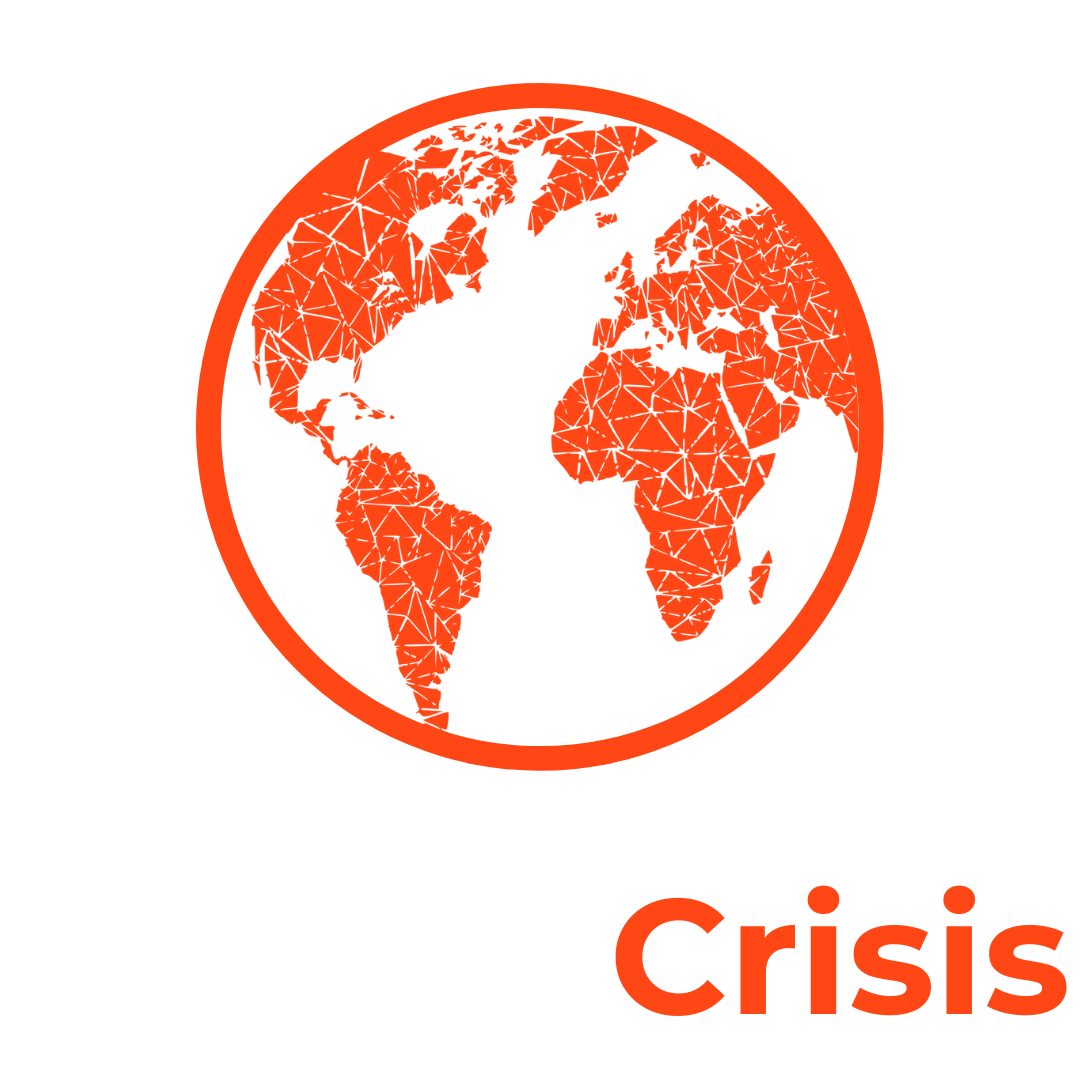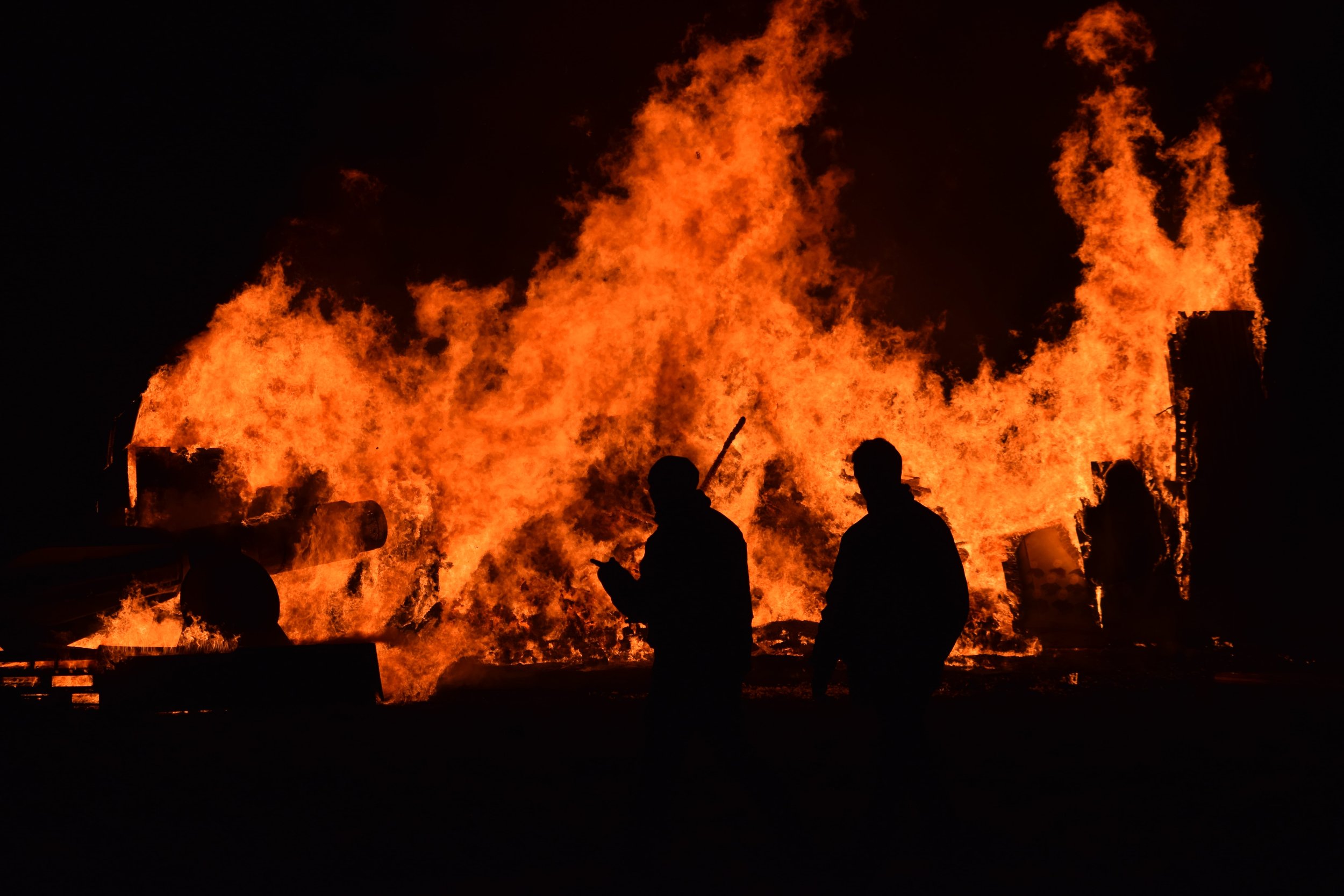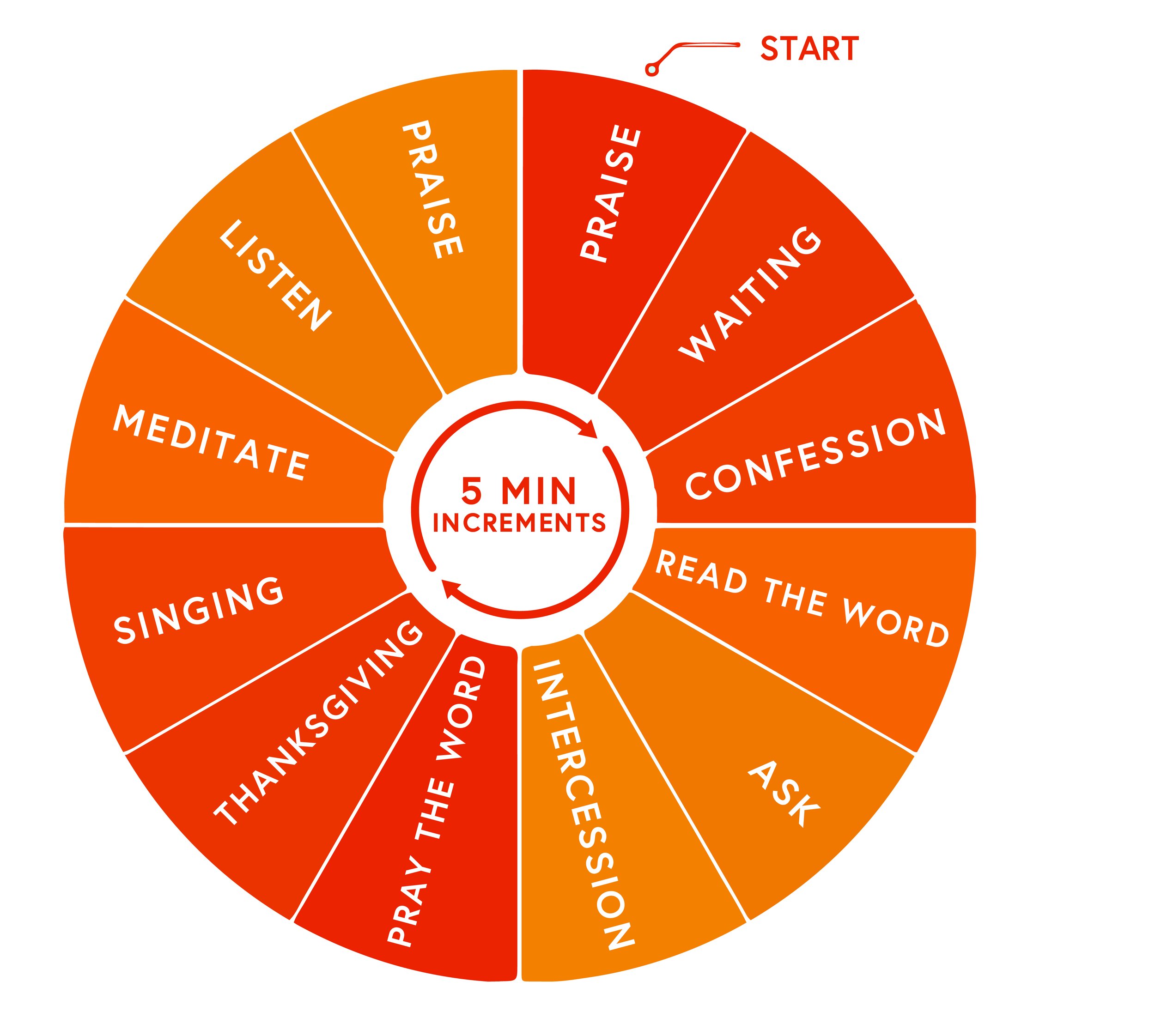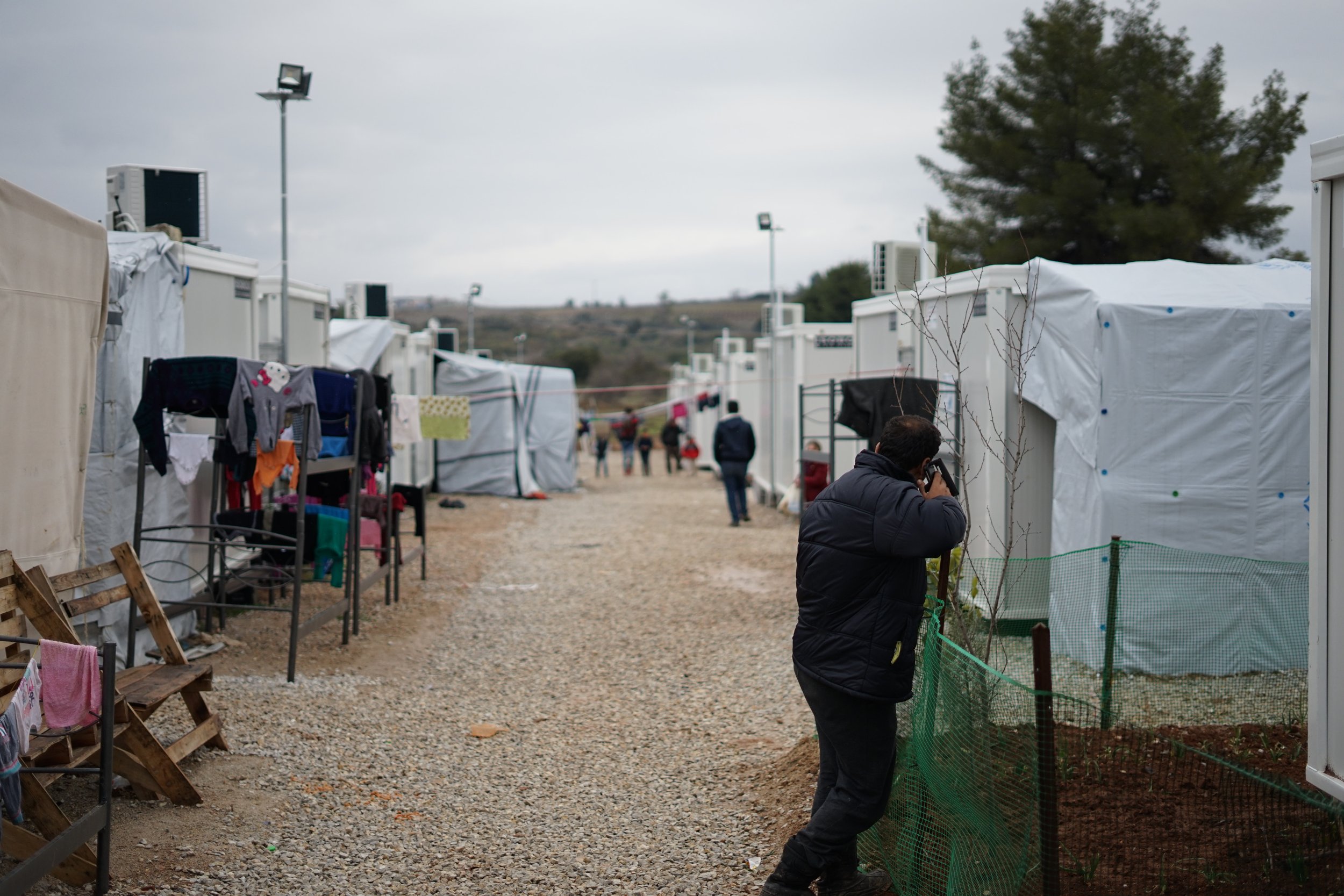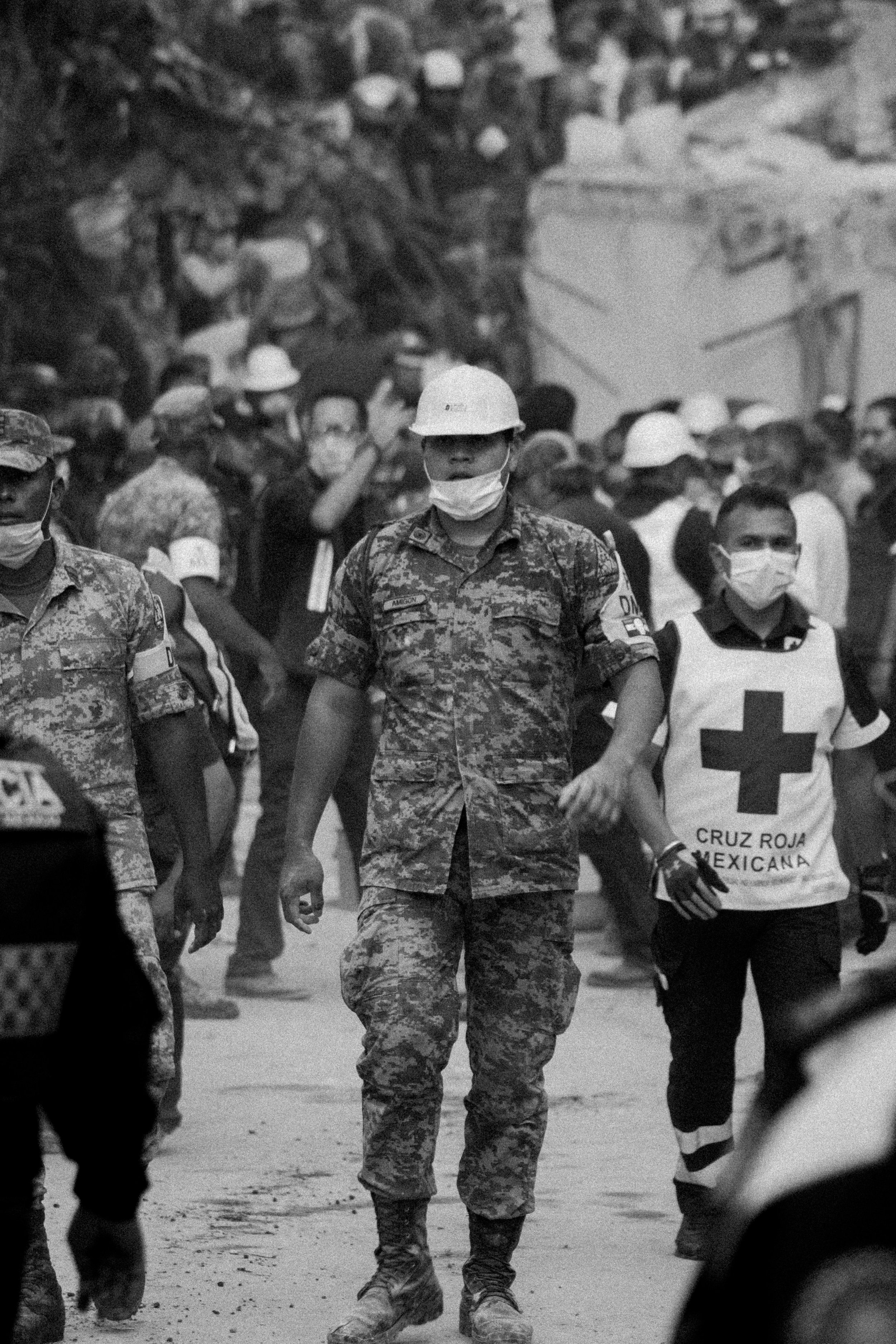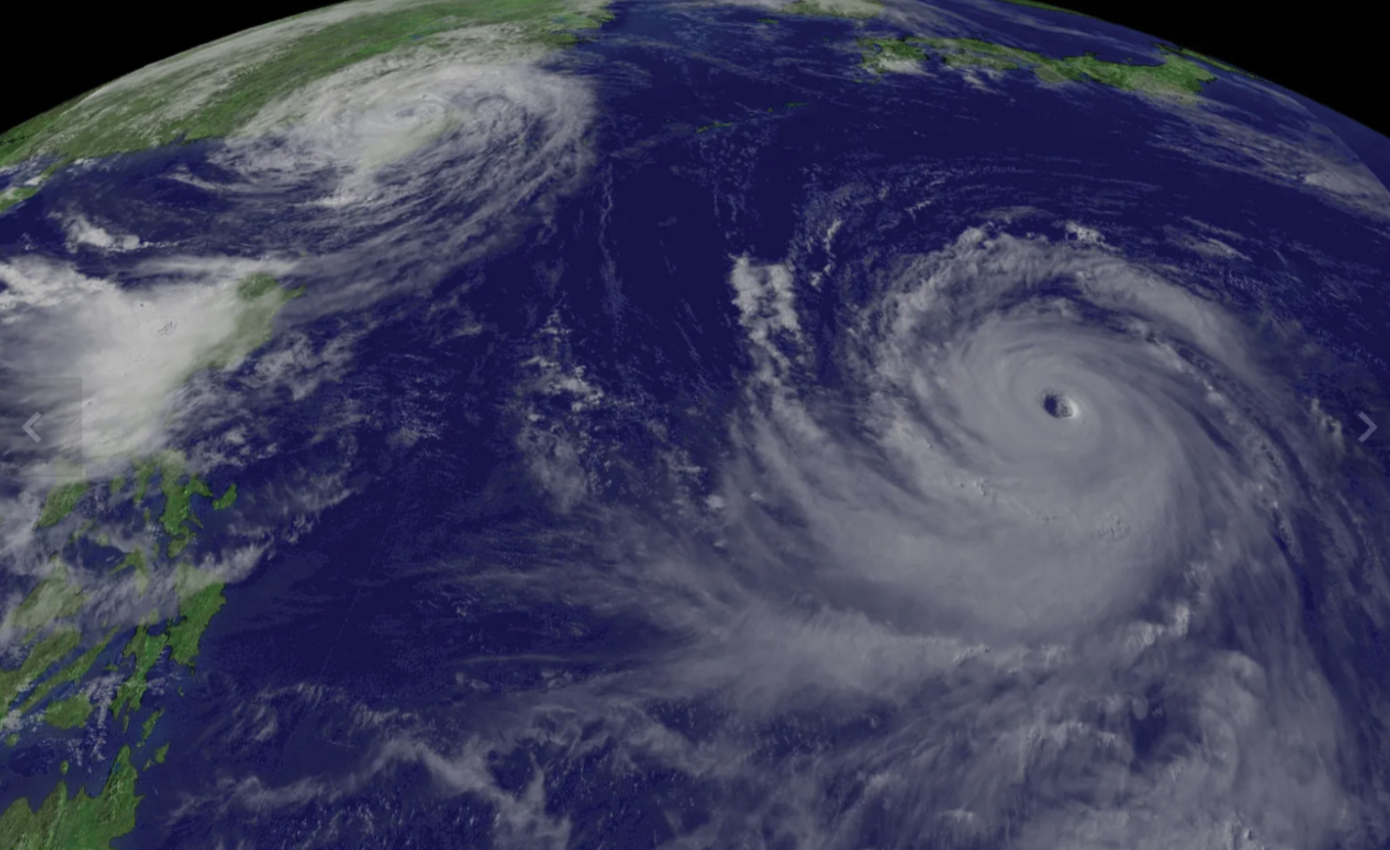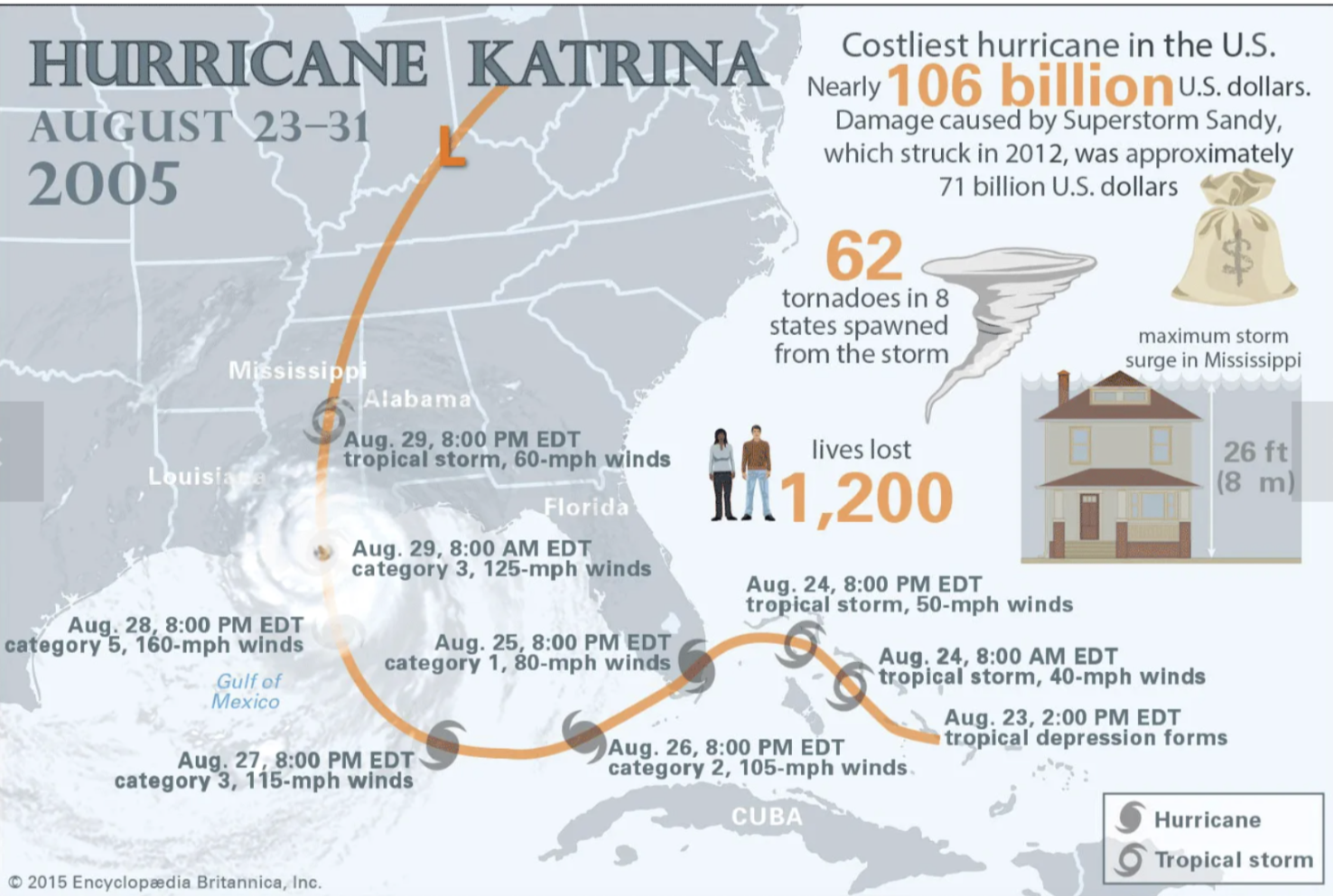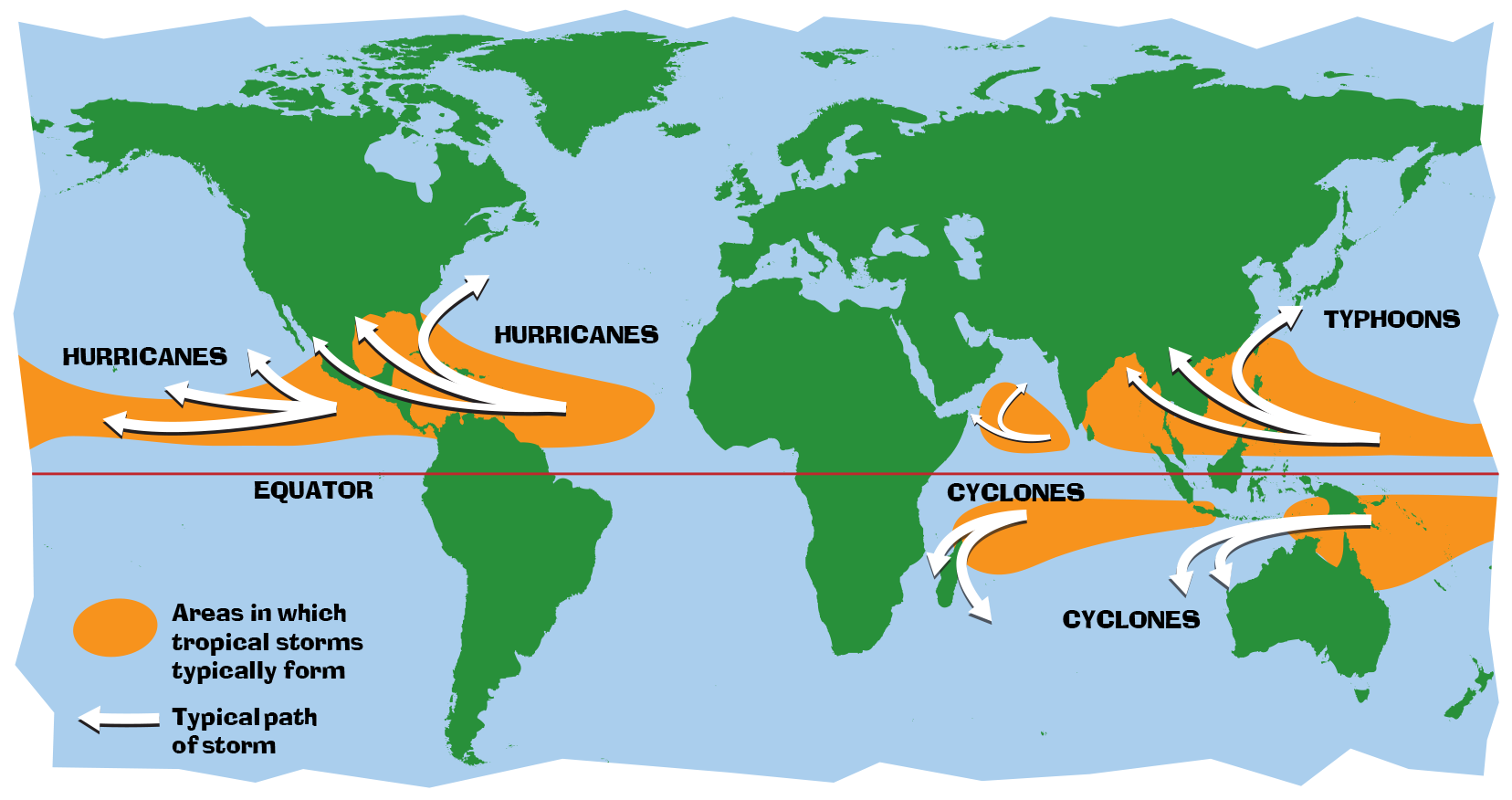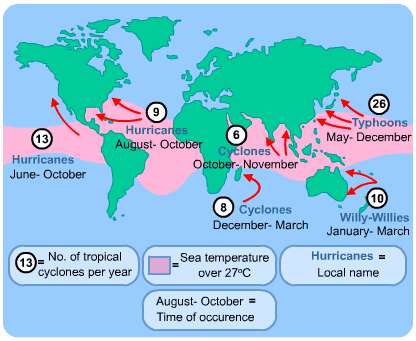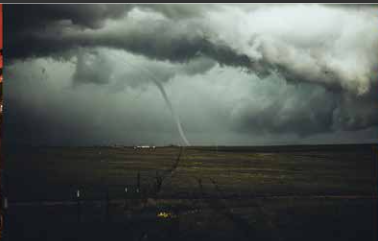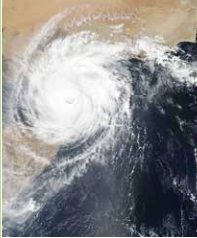Movements Accelerating Through Crisis Response
Articles from the recent “Mission Frontiers”
MISSION FRONTIERS, VOL. 45, NO. 6 NOV/DEC 2023.
Mission Frontiers, a publication of Frontier Ventures (FV), is published six times a year. Contents © 2023, Frontier Ventures. FV is a member of MissioNexus and Evangelical Press Association (EPA).
CLICK HERE TO DOWNLOAD PDF
Nov/Dec 2013 Issue: Movements Accelerating Through Crisis Response
Mission Frontiers, a publication of Frontier Ventures (FV), is published six times a year. Contents © 2023, Frontier Ventures. FV is a member of MissioNexus and Evangelical Press Association (EPA).
DR. MARY ROBERTS and CURTIS SERGEANT
CAROL DAVIS
DR. STAN PARKS
DR. MARY ROBERTS and TRICIA STRINGER
From interviews by Dr. Mary Roberts with:
John Heerema (BigLife,CEO) | Forrest Head(BigLife,COO) | David Palusky (Renew World Outreach, Founder) Larisa Edmond (Renew World Outreach, Director of Partnerships) Linda Epeards( Team Expansion, Project Fulfillment Specialist) | Doug Lucas (Team Expansion, President)
NATHAN SHANK
By DR. MARY ROBERTS, LIZ ADLETA, and DR. JASON HUBBARD
By DR. MARY ROBERTS and GUY CASKEY
Compiled by Dr. Mary Roberts and Dr. Curtis Sergeant, with contributions from numerous local movement leaders across the globe.
By DR. MARY ROBERTS and DR. CURTIS SERGEANT
By DR. MARY ROBERTS
MISSION FRONTIERS, VOL. 45, NO. 6 NOV/DEC 2023.
Mission Frontiers, a publication of Frontier Ventures (FV), is published six times a year. Contents © 2023, Frontier Ventures. FV is a member of MissioNexus and Evangelical Press Association (EPA).
P.R.E.P.A.R.E. Strategy and Example
What if we read Scripture through the lens of crisis and disaster? God consistently transforms the most destructive moments into the most redemptive stories. In the New Testament, the movement of God thrived in the context of multiple crises, such as persecution (Acts 8:1), famines (Acts 11:28-30), urgent needs (Titus 3:14), death (Luke 8:49-56), sickness (Luke 8:43-48), riots (2 Corinthians 6:4-5), and storms (Luke 8:22-25).
DR. MARY ROBERTS
The example below pairs with the article:
Click to read the published article for more insights, timeline, phases chart, and more!
What if we read Scripture through the lens of crisis and disaster? God consistently transforms the most destructive moments into the most redemptive stories. In the New Testament, the movement of God thrived in the context of multiple crises, such as persecution (Acts 8:1), famines (Acts 11:28-30), urgent needs (Titus 3:14), death (Luke 8:49-56), sickness (Luke 8:43-48), riots (2 Corinthians 6:4-5), and storms (Luke 8:22-25). The accounts of responses to disasters and crises were written to all the followers of Jesus.
From Genesis through Revelation, the Bible talks about the aim of God to reach all peoples, using His people. Reading scripture through the lens of crisis and trauma, nearly every person God uses goes through times of crisis in their life, on an individual and/or communal level. How then can we prepare to join God in crisis and recover His designs out of disasters?
One way is to P.R.E.P.A.R.E. to recover God’s designs out of disasters: knowing Him, making Him known, and living by kingdom principles according to Scripture. Whether our focus is across an ocean or across the street, we can prepare locally, regionally, and/or globally to increase effectiveness to be able to love others well in Jesus’ name.
Posture.
Research.
Equipping.
Processes.
Assessment.
Response.
Establishing multiplying disciples and churches
P.R.E.P.A.R.E
A few examples to jog ideas:
Posture – How can you build a scriptural foundation to stand on in the face of suffering? What Scriptures do you need to write on your mind, engrave in your heart, and have on your lips in the midst of a crisis (Deut. 11:18-19)?
As an example, you can view the Suffering Blog Series. It contains 45+ verses and blog posts that show a sample of actions God calls us to in response to suffering and his promised benefits contingent on our response. You can use this for ideas of scriptures to memorize. You can also pray through them using the Prayer Cycle for Suffering.
Research – What types of disasters is your area vulnerable to? What skills and resources do the disciples, churches, and communities around you have? What supplies and skills do you all need to develop?
For example, in Southern California, there is the potential for earthquakes. People had the skills of being chaplains, organizers, prayer mobilizers, chainsaw abilities, Community Emergency Response Team (CERT) trained, supplies stored. Skills and resources such as temporary showers, food distribution, H2O purification, temporary shelter/tents, chaplains, CERT, and chainsaw usage could all be acquired by different people across the churches/community.
You can make a list of people willing to help, their contact information, what skills they already have that may be useful in this context, and what skills they want to learn. Then, connect them to opportunities to use or learn their skills as appropriate. This is also true for supplies, to store and to coordinate, for access with other organizations before a disaster hits.
Equipping – What are the trauma-healing and physical-response skills that can be multiplied alongside the spiritual tools? In what ways can you equip small groups of people to hear, obey, and pass on these tools – for their own resilience and strengthening one another?
Several simple yet significant trauma-healing tools can multiply, click here for a 1-page summary. It is critical to equip disciples and churches to be self-feeding in posture (response to suffering), prayer, 3/3 process (obedience to God’s Word), and people (body of believer relationships).
Physical-response skills will vary across different people, however, everyone can learn a baseline of basic first aid, communication, safety, timing, etc. Working in concentric circles, we as disciples and simple churches, can collaborate with different people/orgs in different ways throughout the crisis response phases.
The training cycle of modeling, assisting, watching, and leaving the skills helps to multiply as small groups or simple churches before disaster hits, which hinders communication, coaching, etc.
Processes – From individual to network-wide, what principles will shape how groups of disciples and churches will make decisions? Communicate? Problem-solve? What processes can you put in place ahead of time?
In a crisis response, being a contributor is greater than being a consumer, as we are blessed to be a blessing. These principles are a part of Zúme, which includes 32 biblical principles that can be used to equip people in crisis response preparation to then apply when a disaster takes place.
Building on existing patterns/relationships is important in the response work. In the SoCal network of house groups, there was the opportunity for spiritual prep and for “practice” of implementation on the physical side in responding in other locales. Then, when local disasters struck, the organization of the groups and people was in place at the basic levels to function simultaneously and in collaboration with other top-down groups, giving a great degree of resiliency to the simple churches.
Listening to the Holy Spirit both individually and collectively, can create what’s called the “starling effect”. Similar to the starling birds, which do not have a prominent, up-front leader but rather the flow of the birds in unity responds and adapts instantaneously to danger from predators.
Planning practically but realizing infrastructure loss can be catastrophic or the little infrastructure that remains may be overwhelmed and not able to function. For example, in Sudan, they had no phones or cell service for a time and were dependent on the Word, Holy Spirit, and their preparations without any means of communicating.
Assessment – What are a few simple questions that can help people assess the surrounding physical, emotional, and spiritual states? In what ways can continuous (formal and informal) assessment help?
A few questions to start with the big picture: 1. What is the situation? 2. What is God’s will? 3. What is God asking me and/or us to do?
On the physical side the questions shift through the 4 phases, such as: 1. What needs are not being met yet? 2. How can we help distribute resources in Jesus’ name and track to follow up? 3. How can we steward resources through the 4 phases to lead from rapid response to long term vision?
In the trauma healing tools, the three listening questions are helpful for both personal and communal processing: 1. What happened? 2. How do/did you feel? 3. What is/was the hardest part? In the big picture, people progress from survival mode to incoherent to coherent in their emotional processing and ability to communicate one-on-one or in a group.
Spiritually, one might ask, 1. Was there a time that you cried out to God? 2. Who was impacted the hardest in your community? 3. Do you know anyone hungry for God after all that happened? These questions can help identify potential persons of peace in a community through the phases of recovery.
Through continuous conversations with people closest to the ground and engaged in action, one can sense the pulse or acquire an informal assessment of where God may be working or where He might lead for next steps.
Note, maintaining relationships involves honoring those who “remained with the baggage” even if they are not able to actively participate in the crisis response. Also, seeking guidance from the Lord is essential. David at Ziklag and Abiathar (1 Samuel 30) are examples of these.
Response – In what ways can ordinary people in churches join God at work in each phase of disaster response: readiness, relief, recovery, and rebuilding? How can you connect, communicate, and collaborate with various professional skills and resources, with the main resource being ordinary people?
Readiness: All can be equipped, at minimum on the spiritual side (3/3rds process, prayer, posture, people). The physical preparation depends on the local context. Trauma-healing tools can be prepared and practiced through the 3/3rds process by everyone at varying degrees.
Relief: At the micro level, everyone can participate at the individual level. At higher levels, leadership can focus on the problems and opportunities at the macro or network level (at least through partnership).
Recovery: Again, all can participate at least on the spiritual side, but often on the physical side it is possible for many to implement ABCD (Asset Based Community Development) principles which parallel our spiritual ones in many ways. This phase is a sweet spot for people to demonstrate openness/readiness for spiritual things.
Rebuilding: Everyone can build on relationships and patterns established in recovery.
Establishing multiplying disciples and churches. What will be your plan to respond rapidly with a long-term vision? How will the disciples and churches sustain the response through the four phases?
In many ways, crises are a test of how sustainable and resilient our work has been in the 4Ps (posture, prayer, 3/3rds process, people). It can also be a source of breakthrough as previously prevailing patterns of belief and behavior among people are tested and found inadequate to the new challenges. They are then prepared and open to consider alternatives. They can be exposed to new ideas to establish new patterns of behavior and beliefs. Overall, in the limited window following a crisis, worldviews can change quickly!
What could your families of disciples and churches put into action and pass on to others to PREPARE?
If you read the P.R.E.P.A.R.E. template with “you” as singular, go back through and read with “you” in the plural form: “we.” How does it change your response?
Understanding the response phases is foundational to any strategic planning and decision-making processes. The more you can access real-time information on the ground, asking questions appropriate to the phases, the more helpful your response efforts can be…
Explore other articles, including an accompanying graph, chart, and more information in the Mission Frontiers Nov/Dec 2023 Issue: Movements Accelerating Through Crisis Response.
Nov/Dec 2023 Issue:
Movements Accelerating Through Crisis Response.
Trauma Healing Resources
The word trauma has a variety of connotations in the West. However, much of the world does not have a word for it in their language, though they are not strangers to the concept and its effects.
Trauma is “an emotional response to a stressful event or series of events that cause(s) a variety of negative consequences, including mental and emotional difficulties, and sometimes physical symptoms.” A single event or a series of events can have the same physical, emotional, and mental impact.
View various resources on Trauma Healing...
TRAUMA HEALING TRAINING GUIDE (PDF)
TRAUMA HEALING BOOKMARK (PDF)
MISSION FRONTIERS, VOL. 45, NO. 6, Pg. 18-20 NOV/DEC 2023.
Mission Frontiers, a publication of Frontier Ventures (FV), is published six times a year. Contents © 2023, Frontier Ventures. FV is a member of MissioNexus and Evangelical Press Association (EPA).
Suffering Blog Series - Curtis Sergeant
Suffering comes in different forms and impacts everyone. As believers, “in fact, everyone who wants to live a godly life in Christ Jesus will be persecuted.” 2 Tim 3:12. To see God in crisis involves being able to see suffering through God’s perspective and responding to Him, recovering His design in a broken world.
Suffering comes in different forms and impacts everyone. As believers, “in fact, everyone who wants to live a godly life in Christ Jesus will be persecuted.” 2 Tim 3:12. To see God in crisis involves being able to see suffering through God’s perspective, and responding to Him, recovering His design in a broken world.
Joining God in the midst of crisis means stepping into moments of the greatest depth and breadth of brokenness concentrated in a people or place. Yet, what if these are some of the moments where God is also close and at work? "The Lord is close to the brokenhearted and saves those who are crushed in spirit." Psalm 34:18
One of the most valuable resources is a biblical response to suffering:
by Curtis Sergeant
Using 45+ portions of scripture, a biblical response to suffering is guided by the green highlighting, and scripture portions that speak to the resulting blessings (contingent on our response) in yellow highlighting.
Other Resources:
YouVersion Reading Plan: Enduring Through Suffering
Uses the Suffering Blog Series as a 50-Day YouVersion Bible reading plan.
“The Only One”, a book by Curtis Sergeant
To download the eBook for FREE use code ONE4FREE at checkout.
Click Here for an accompanying 30-Day Kingdom Prayers Youversion Bible Plan.
A Prayer Cycle for Suffering, Crisis and Disaster Times
When a crisis/disaster hits in a person's life or a whole country, we long to pray but sometimes wonder how. This prayer cycle guides you, as an individual or community, through 1 hour of prayer across 12 different sections with scripture on God's heart and perspective for us amid crisis and disaster.
When a crisis/disaster hits in a person's life or a whole country, we long to pray but sometimes wonder how. This prayer cycle guides you, as an individual or community, through 1 hour of prayer across 12 different sections with scripture on God's heart and perspective for us amid crisis and disaster.
Play Podcast Episode 11 guiding you through the prayer cycle:
Prayer Cycle:
Hurricane / Cyclone / Typhoon Opportunities for Multiplying Disciples and Churches
Depending on where you live, different natural disasters can impact you or the people around you. These crisis and disaster moments are sometimes the most receptive moments in people’s lives, as they realize their need for God in the shaking of life. They are open to new connections, communications, and collaborations, in need of physical or emotional help, and spiritually searching for God…
Depending on where you live, different natural disasters can impact you or the people around you. These crisis and disaster moments are sometimes the most receptive moments in people’s lives, as they realize their need for God in the shaking of life. They are open to new connections, communications, and collaborations, in need of physical or emotional help, and spiritually searching for God.
What if we paired receptivity with reproducibility?
We can apply the same multiplication and movement principles from our everyday lives (Titus 3:14) to our preparation, relief, and response in crisis and disaster events to multiply disciples and churches who transform communities. Living out Matthew 25 and 28 in loving people like Jesus - physically, emotionally, and spiritually - can join God in transforming the disaster, or potential disaster, from darkness to light. Crises and disasters are pivot points in people’s lives, what if instead of only destructive memories, they were actually redemptive pivot points for the rest of their lives.
Do we have eyes to see God at work in the lives of people preparing or impacted by a disaster to join Him at work and multiply?
For those that live in the pathways of hurricanes, cyclones, and typhoons (same type of storm with different names according to the region of the world), there are some unique windows during the annual storm seasons to catalyze and strengthen multiplying disciples and churches. From preparation before a storm is in the news, to when it is headed to landfall, to during, immediate relief after, and recovery, we can make the most of every opportunity to enter into people's lives and look for persons of peace that are hungry for God (pairing receptivity with reproducibility).
“Our people must learn to devote themselves to doing what is good, in order to provide for urgent needs and not live unproductive lives.” (Titus 3:14)
Below are two resources:
The first has some simple ideas for practitioners to use each phase of the hurricane disaster to lead to the end vision of multiplying healthy disciples and churches who transform communities. The second is a practical prep sheet that has been and can be used with people who have moved to a place impacted by hurricanes (or similar storms), from refugees to inner-city transient areas, to new neighbors that moved in recent years, etc.
Hurricane Strategy Ideas for Believers (1-page)
(Google Doc)
Hurricane Practical Prep Sheet (pdf)
(email us through the “CONNECT” link for an editable version to adapt this for your city/county).
Click “Connect” to communicate with others pursuing the vision…
…with simple training outlines for how you can gather practitioners to strategize for hurricane season and for how you can use the practical prep sheet with non-believers to lead to entryways physically, emotionally, and spiritually.
“Hurricanes are the most violent storms on Earth”
(NOAA Predicts Above-Normal 2022 Atlantic Hurricane Season, www.noaa.gov).
Each season and storm is an opportunity, on both an individual level and a community level.
Example of the impact of a hurricane:
How could we, as multiplying disciples and churches, be ready ourselves for the storm and be ready to go deep with a few and engage the people right around us, or respond in teams of disciples/churches, with eyes to see God at work and join Him.
As we get ready, here is one of many stories that can be shared with people during conversations about these storms:
Jesus calming the storm: As evening came, Jesus said to his disciples, “Let’s cross to the other side of the lake.” So they took Jesus in the boat and started out, leaving the crowds behind (although other boats followed). But soon a fierce storm came up. High waves were breaking into the boat, and it began to fill with water.
Jesus was sleeping at the back of the boat with his head on a cushion. The disciples woke him up, shouting, “Teacher, don’t you care that we’re going to drown?”
When Jesus woke up, he rebuked the wind and said to the waves, “Silence! Be still!” Suddenly the wind stopped, and there was a great calm. Then he asked them, “Why are you afraid? Do you still have no faith?”
The disciples were absolutely terrified. “Who is this man?” they asked each other. “Even the wind and waves obey him!” (Mark 4:35–41)
I See A Disaster on the News, What Can I Do? (Includes Trauma-Healing Tools).
PRAY
BUT DON’T STOP THERE. HERE ARE TWO REASONS:
As you talk to God, listen too. God speaks all through scripture and through the Holy Spirit. God may lead you, as you listen to Him, to what your actions can be, who He might want you to call, someone you forgot you knew, an idea that hasn’t been done yet, etc. the possibilities are endless because God is the one talking.
Prayer naturally moves people into action. Be ready for what action steps people can take as God moves on their hearts as they increase their prayers…
PRAY
GIVE
GO
DISCIPLE
Pray
but don’t stop there. Here are two reasons:
As you talk to God, listen too. God speaks all through scripture and through the Holy Spirit. God may lead you, as you listen to Him, to what your actions can be, who He might want you to call, someone you forgot you knew, an idea that hasn’t been done yet, etc. the possibilities are endless because God is the one talking.
Prayer naturally moves people into action. Be ready for what action steps people can take as God moves on their hearts as they increase their prayers.
Give
but with wisdom. Here are two avenues:
Relational before organizational. Do you know people there, or nearby who are responding? Give to where the distribution can happen through multiplying disciples and churches. This gives possibilities for trauma-healing, the gospel, and the long-term impact of multiplying disciples, churches, and sustainable solutions in the full journey of recovery, setting up for impact beyond the initial relief.
As Jesus said, “wise as serpents, harmless as doves” (Matt 10:16). The reality is that evil also wants to make the most of this opportunity for destruction, not just the good-intended folks. Also, good intentions can sometimes hurt while trying to help. Don’t believe everything on the internet about the crisis and the funds, use wisdom & research to filter who to give money to.
Go
but at the right time. Here are two possibilities:
Look for the neighbors from surrounding cities and nations that can respond faster, with near-culture language and customs, who you can partner with, from afar or in person. Many other people are also rushing in, make sure you can self-sustain rather than pulling resources away from those in need. Doing everything in the name of Jesus, as many religions are simultaneously swooping in, trying to win people to them through the supplies they give.
The shift from relief to recovery might be a sweet spot for you to have a tremendous impact on people’s lives during the crisis response without needing access to a mass amount of supplies. When outside supplies begin to dwindle or be removed, the emotions are often also shifting from shock, anger, and denial to no hope among the timeline of average processing lengths. Recovery is often a longer phase than relief, and gives open doors to trauma-healing to gather people in small groups, disciple, and help rebuild physically, emotionally, and spiritually, to recover God’s design.
Disciple
but trauma-informed. Here are two ways:
Paul said to Titus in Titus 3:14, “Our people must learn to devote themselves to doing what is good, in order to provide for urgent needs and not live unfruitful lives.” As disciples and churches, we were meant to learn how to respond to urgent needs. Paul says this is so that we don’t live “unfruitful” or “unproductive lives,” or other versions say, “so that our life doesn’t account for nothing.”
Discipleship is meant to be holistic, helping others follow Jesus physically, emotionally, and spiritually. To reflect that, it is important to walk with people through the trauma-healing journey and equip them to walk alongside others. Learning to listen well to one another can be one of the most helpful skills in this process. To learn more, check out these simple bookmarks that give an overview of the training, and are meant as reminders for folks who have been equipped in Healing Hope groups, using the 3/3rds discipleship pattern and discovery bible study. Contact us with questions or to learn more.
Further Resources:
TRAUMA HEALING TRAINING GUIDE (pdf)
Trauma Healing Bookmark (pdf)
Gathering Groups to Win (pdf)
Giving to Funding for Movements (pdf)
(Curtis Sergeant Talk Outline)
Contact to Learn More:
End Vision in Midst of Disaster Response
It is to the laser focused laborer who maintains their focus upon the main thing, who can keep their eyes focused upon the End Vision—the glory of God among those who have never had the Jesus option. O, that the peoples of the earth would come to know and delight in the joy of being and making reproducing lovers of Jesus (disciples) who hear and obey, who choose to live in transformed ways. How will they hear? How will they know Jesus unless they have the privilege of hearing and obeying the only One worthy? As the waters cover the seas upon the earth, so shall the knowledge of the glory of the Lord be demonstrated and declared throughout the peoples of the earth. (Hab. 2:14 paraphrase)
Adapted from R. Nyman
“God, what needs to be done for the sake of the launch of cascading movements to Christ in the midst of this present suffering?” Not, “God, what can we do?”
“God, what needs to be done for the sake of the launch of cascading movements to Christ in the midst of this present suffering?” Not, “God, what can we do?” Vision drift is easy to be carried into in the midst of large-scale disaster zones. End Vision brings clarity to keep one focused upon what needs to be done.
In American football, the team on the field who possesses the ball has one goal—get to the End Zone. That is it, pure and simple. The coach, the players, the backup players, all live to see that temporal end vision fulfilled. There are times when vision-drift occurs in that process: players are injured, the coach is not coaching well, the playbook falls into the hands of the opposing team, the weather can interfere, mental toughness can wane, physical strength can fail, interpersonal issues within the team can obscure unity, primidone’s can self-promote, the opposing crowd can infuriate. Teams can lose their way. Vision-drift happens.
Imagine how ridiculous it would be if one of the players decides to leave the field to go sit in the spectator seats. Imagine how crazy it would be if the coach takes his headphones off and decides he just wants to make things up as they go along. Crazy, it seems, far from reality in the missions world, it is not.
How will they hear? How will they know Jesus unless they have the privilege of hearing and obeying the only One worthy?
It is to the laser focused laborer who maintains their focus upon the main thing, who can keep their eyes focused upon the End Vision—the glory of God among those who have never had the Jesus option. O, that the peoples of the earth would come to know and delight in the joy of being and making reproducing lovers of Jesus (disciples) who hear and obey, who choose to live in transformed ways. How will they hear? How will they know Jesus unless they have the privilege of hearing and obeying the only One worthy? As the waters cover the seas upon the earth, so shall the knowledge of the glory of the Lord be demonstrated and declared throughout the peoples of the earth. (Hab. 2:14 paraphrase)
Daniel 5 - Handwriting on the wall.
2 Kings 6 - Eyes to see the hand of God moving in the midst
EXAMPLE from Southeast Asia:
Movement Mindset-The resources are in the harvest
Phase One:
Trauma Bell curve of response-
Who survived?
Who is injured and needs triage
Who is injured in minor cases
Shelter condition
Temporary tents
Food, water, toilet issues
Shock, PTSD, grief, anger, numbness
Ask God for eyes to see and heart to feel from His
Listening prayer each morning
Ask God, “What needs to be done? Not what can we do?”
Personal check in/checkup for trauma impact for workers
Med volunteers who are movement centric, and/or teachable in that
Volunteers and team meet daily for prayer, co-ordination, casting End Vision of the launch of Movements
Equip volunteers and team to be integral in the med relief with simple intake forms for ailments, then a question regarding person/persons feel trauma and want to talk through with someone who cares
All team members and volunteers are equipped to identify themselves as followers of Isa Al Masih and it is because of Allah’s great love that they are compelled to help in any way they can. No selfies with suffering, no banners with org names, just Jesus and practicing His presence and His commands among the suffering.
All conversational tools for location of Persons of Peace (Luke 10, Matthew 10) are based upon dependence upon the Holy Spirit to lead and guide. All are utilized to invite households to then, at appropriate time in the response period, offer DBS stories of God’s hand, His way of healing and salvation, and His pathway of abundant life.
Med team + Trauma Debrief team + plus daily intake of contacts who respond to being prayed for in contextual way
After people have initial end to event trauma (am I alive or injured? Are those whom I love alive or injured? How will we live? Condition of former dwelling? Tent living? Food, water, supplies? Toilet situation?)
Movement Mindset- Tracing the hand of the HS with intentionality in finding the households of peace
Equip team each day in using following code to track how HS is moving:
A= Spiritual statements/actions
B=Spiritual conversation (oral stories of Jesus, Creation to Christ)
C=Prayer in name of Isa Al Masih / Jesus (contextual and brief)
for healing (emotional, physical), for provision to bless them to be a blessing to others, e.g.
Identify potential Persons of Peace- send contact info data to team data collector daily with the
following details:Name, location, code so far, physical needs addressed/still needed, next steps needed
Who is potential POP among that group?
Persons of Peace (Luke 10, Matt. 10) will:
Open to spiritual truth and to the messenger
Opens their household/affinity group to the messenger and message
D=DBS addressing trauma: on ramp 4 DBS with 7 verses each (Isaiah, Psalm 23, story of Jesus and calming waters, Jesus healing the woman w/issue of blood)
E=DBS core set
F=Commitment, baptism
G=House fellowship formation: DBS (Acts)
H=Potential POP and household no longer desire to meet in Discovery Group
Go to community- ask to meet with community leaders- most immediate response goes to easiest to reach (physical location). The villages off main roads will typically get least immediate response but perhaps have more dire life-death needs.
Phase Two:
Assessed all 3,000 + contacts: 3,000>90 households>30-40 DGs have continued into mostly Isa stories as of May 8, 2019. Example, four households have come to follow and been dunked thus far into first generation house fellowships. Not yet, of this recent effort have they consistently multiplied to 2nd and 3rd generation. We have seen in the other two UPGs outside this particular UPG several house fellowships into 2nd and third generation.
Potential POPs
Potential POPs who have already been gathered into oikos, have begun Discovery Group with them
After 4 times, our team has Modeled facilitation of DBS questions, commit to move to outside group, coach key facilitators of Discovery Groups. After on-ramp 4 DBS stories as filter, the core set of DBS stories.
Components of daily movement team meetings:
DBS (20 minutes) for building up the laborers in character growth and courage/boldness.
Praise, Worship
Unflinching Evaluation: go over yesterday’s contacts and celebrate what God is doing, keeping loving accountability
Coaching of stuck places, needed new paradigm adjustments to be more movement mindset
Listening prayer for asking God what needs to be done as priority follow up of contacts for the day
Corporate Prayer over the present day’s efforts
Progress of Discovery Groups, fishing for newer contacts as POPs, all sent to data collection teammate.
Phase Three:
Movement Team check-ins now 4 x’s weekly. No contact is left without consistent equipping past 3 days, 5 at max.
Trauma Debrief questions:
When looking for and/or finding potential POPs, gather 4-5 in group/household to invite them to share their story together with you. Keep in the mind the following:
Bathe all that you do in listening prayer together prior to going out together. Also, have those in your group (in 2’s) walking the perimeter, in intercession conversation style, while others in the group are directly responding with impacted community. We find that having rotating intercessors praying at base camp to be effective as well.
Ask the Lord to give you His compassion, His mercy, in increased measure in the brief interactions. To Deut. 6 and Philippians 2:1-11 others is huge here. Listen to their story with patience and lovingkindness. Keep your eyes on the End Vision. No vision-drift allowed. God’s glory in the launch of movements among your people is your end vision.
Ask the Lord to lead you to POPs and their households in this immediate response phase.
Upon entering with team’s response, whether medical/physical needs relief, have each of your team be trained to facilitate the following in loving care at the moment. Train them in “how” to pray for each contact in a context sensitive way, in a setting the DNA of asking God to bless them in order for them to know His blessing in relationship with him, in order to be a blessing to their family, to their community, and to their own people and beyond.
Posture to ask the Lord to give you persons of peace. Listen to their story with patience and loving kindness.
Have each person share their responses as you invite them to respond to questions.
Each person asked for their responses to each question
Listen with care and intent to show love in your listening
Tears are a way of healing which are received, affirmed, and not closed off when one responds with tears. Listen well.
Identify your own fears, feelings at minimum in order to show your own process.
Offer to pray for God’s healing hand, in context sensitive ways. Do not shy away from praying in the name of Isa Al Masih, in a cousin context, as your team has already identified itself (each person re-iterates personally) that Nabi Isa Al Masih is the one whom you follow and in His name there is hope and healing.
Facilitation of trauma debrief questions suggestions:
Remember to not allow “vision-drift” in the midst of the chasm of humanitarian need laying before your interactions there. If folks do not feel they can join in this multiplication approach (different to the prevailing model) then bless them and ask them to not come out with you all again.
Remember to not allow “vision-drift” in the midst of the chasm of humanitarian need laying before your interactions there
Trauma Debrief suggested questions to use alongside initial med/food relief response:
Gather 4-5 in group/household
Ask the Lord to give you:
Ask the Lord to demonstrate/reflect His tenderness as you listen to their story with patience and lovingkindness. Isaiah 58 themes to pray as you interact with others
Possible Questions to use: (adapted to COVID-19)
Describe what happened? What did you experience? Describe where you were, when _________ happened? (for COVID-since it is not an event you can have them share their thoughts feelings of Question 2, after establishing the reality of the impact of COVID-19) An optional question here is, “Describe how this COVID-19 has impacted you, your loved ones? (in practical ways?)”
How did you feel? Describe your greatest fear or deepest worry over this present situation? Please share any other feelings or thoughts you want to share as you and your loved ones and community face the impact of this situation.
When you close your eyes: in rest, or in sleep, what thoughts related to the impact of this present crisis do you churn over and over in your mind? What thoughts are the most terrible to face when you think about this situation, which you have a hard time not thinking about?
What regrets might you be carrying about this present situation?
Describe how you long to know about God’s comfort in the midst of this situation. If you could see God bring a miracle to you and your family in the midst of this, what would that miracle be?
God has made each person to desire to know Him as the greatest blessing, to be blessed by Him as we come to understand what it means to enjoy relationship with Him, and to then pour out blessing to others: to family, to extended family, to your community, your people group, other peoples. What can you do/help with, to encourage/comfort give to others at this time? Know that when you do this you are demonstrating your desire to please God. This also helps you to feel God’s hope in the midst of even the most difficult of sufferings. (The concept is to impregnate every interaction of spiritual conversation with “blessed in order to be a blessing” Gen. 12:3-5, to reproduce even before they come to follow, but also to see who among them is a potential POP).
DBS sets as on-ramps to core 3/3rds discipleship/church sets:
Bridge DBS Story sets for Trauma/Fear/Crisis felt needs related:
(a few options for on-ramp DBS story sets can be found below- after the on-ramp set then continue to equip them to take them into the 3/3rds core story set you use)
Option #1: DBS Story set… In the Midst the of the Storm, God is…
DBS: Deuteronomy 32:3-4 God is our Rock
1. What did you like in this story? What is challenging?
2. What did you learn about God’s character from these verses?
3. What did you learn about overcoming trauma/crisis/fear?
4. How could you apply/obey these truths in your own life? “I will…”
5. Who else and their family/friends can you share this with to help comfort them? Who? When?
DBS: Isaiah 40:28-31 God is our Strength
DBS: Isaiah 41:10 God is Always Present
DBS: Isaiah 54:10 God is Unshakeable
DBS: Isaiah 57:15 God Revives the Weary
Option #2: DBS story set…God Who Protects and Guides
DBS: Psalm 23 God is the Good Shepherd
DBS: Mark 6:34-52 God is Provider of all that we need
DBS: Matthew 6:26-34 Fear Not: God knows and loves you
DBS: Mark 5:24-42 Isa Al Masih has all power to heal
After either one of these short “on-ramp” DBS story sets, we invite the group into the DBS or 3/3rds core story.
There are multiple other examples of responding to crisis to catalyze and grow movements, more articles to come!
Movement Mindset, No Matter the Existential Crisis
Movement brother S., talked through how his movement leaders approached an Ebola response with a movement mindset in his region of Africa in 2011-2013….
…TAKE STRATEGIC LONG VIEW IN SHORT TERM RESPONSE TO CRISIS.
In the book of Daniel, there are great reminders of steadfast confidence in God Almighty, no matter the existential crisis of the year or, in his case the 69 years. Pursuing the biblical vision of stepping into crisis, as fear's end game in the hands of the enemy of our souls is always to cripple, to debilitate, to annihilate any semblance of living a reproducing worthy life….
Adapted from R. Nyman
Movement brother S., talked through how his movement leaders approached an Ebola response with a movement mindset in his region of Africa in 2011-2013.
1. Fear is the most crippling of enemies which the Enemy of our souls will use if given opportunity.
2. God’s people need to move toward crisis, not away from it.
God’s people need to move toward crisis, not away from it.
3. Worship as warfare
4. Prayed fervently, consistently
5. Intentionality in unity - Spirit led-directed unity-to practice listening together to hear and obey together-Acts 15:28
6. Educated themselves in phases of trauma response
7. Served in the hard places, lost many
8. Tracking of movement process with us end vision intentionality. They had seen massive reproducing of multiple generations of new followers in households prior to the Ebola outbreak. At the time of, and in the immediate couple of years ensuing, the multiplication of these Discovery Groups coming to follow into forming house fellowships declined by 95%. The movement catalysts, local generational leaders, were re-purposed to serve in practical ways during this time. This actually gave them great beach heads (models) for future harvest in formerly closed radical communities, who remembered that there were Isa followers who served and loved them in their hard losses and places. They were so moved by the gospel and its messengers that they were softened to the gospel in future years. The beautiful weaving of being and doing in the name of Jesus is seen here. Social gospel without the power of the gospel is good works which glorify the do-er. For God’s glory, the both “doing” and “being” the gospel of Jesus with clearly spoken reasons of the “do-er” being a Jesus follower and obeying his lead, brings glory to God alone, not man.
Take strategic long view in short term response to crisis.
In the book of Daniel, there are great reminders of steadfast confidence in God Almighty, no matter the existential crisis of the year or, in his case the 69 years. Pursuing the biblical vision of stepping into crisis, as fear's end game in the hands of the enemy of our souls is always to cripple, to debilitate, to annihilate any semblance of living a reproducing worthy life.
May the Lord give you and your people an increase of knowledge, insight, and wisdom in these times. And may the kingdom of reproducing disciples and churches of those who love and obey Jesus be increased among your people and places of focus.
Strategic Crisis Response Towards Launching Movements
When responding to a large-scale crisis or helping people recover from a disaster, how can we maximize fruit? How can we maximize the practical support we give them? And what principles can increase urgent-needs response, sustainable recovery, and multiplication of believer groups in an integrated way?
“When responding to a large-scale crisis or helping people recover from a disaster, how can we maximize fruit? How can we maximize the practical support we give them? And what principles can increase urgent-needs response, sustainable recovery, and multiplication of believer groups in an integrated way?” Opening excerpt from the article, “Post-Disaster Sustainability and Spiritual Multiplication” by Trevor Larsen.
“Post-Disaster Sustainability and Spiritual Multiplication” by Trevor Larsen
Click on the “Article” button (Below) to download the article and discover 11 principles that can shape disaster response to multiply movements:
Click on the “Video” button to watch a video with stories, examples, and expansion of the principles to learn about “Strategic Crisis Response Towards Launching Movements”
Other resources by Trevor and the Focus on Fruit Team:
Global Proportions Map of Crisis Impact
Globally, crises and disasters have the greatest level of devastation where there is the least gospel saturation.
The 10/40 window. What if crises and disasters create the highest accessibility in moments of least resistance? What if the moments with the highest destruction are also the moments with the highest receptivity in people’s lives? What if crises and disasters are our open doors (physically, emotionally, spiritually) to seeing Matthew 24:14, Revelation 7:9, etc. in our generation?
What do you notice about this picture?
Globally, crises and disasters have the greatest level of devastation where there is the least gospel saturation.
The 10/40 window.
What if crises and disasters create the highest accessibility in moments of least resistance?
What if the moments with the highest destruction are also the moments with the highest receptivity in people’s lives?
What if crises and disasters are our open doors (physically, emotionally, spiritually) to seeing Matthew 24:14, Revelation 7:9, etc. in our generation?
What if the very parallel of the increase of movements globally and the increase of crisis/disaster globally is linked by the “in order to” from Titus 3:14:
”Our people must learn to devote themselves to doing what is good in order to provide for urgent needs and not live unfruitful lives.”
The entire New Testament is about multiplying disciples who follow Jesus, healthy simple churches, and communities being transformed. Paul says to Titus, that “doing what is good is in order to provide for urgent needs.”
What if the increase of crises and disasters, at the same time of the increase in multiplication movements, are to see the “in order to provide for urgent needs.” Then, the implication from scripture saying, “to not live unfruitful lives” (NIV) or other translations that say, “then they will not be unproductive” (NLT) or the Message says, “so they don't end up with nothing to show for their lives.” What could be at stake if we, the church, miss Titus 3:14 in the midst of all that is happening today? What could be at stake if we miss the opportunities given to us by God in crisis?
Crisis Bible Discovery - CHIRP
What if we read scripture through the lens of crisis and disaster?
Think about some popular Bible stories...Joseph, Noah, Jesus...these and so many others are filled with crisis and disaster moments, from the famine when Joseph was second in command, the flood when Noah built the ark, the murder of Jesus on behalf of all of us.
What if we read scripture through the lens of crisis and disaster?
Think about some popular Bible stories...Joseph, Noah, Jesus...these and so many others are filled with crisis and disaster moments, from the famine when Joseph was second in command, the flood when Noah built the ark, the murder of Jesus on behalf of all of us.
Reading The Bible to Find God in Crisis
What could shift if we saw the Bible as a book full of wisdom, direction, comfort, trauma and so much more that relates to the magnitude of crises and disasters today.
Examples from Scripture
Explore this with your church, family, friends, or quiet time with Jesus.
Here is a deep dive template:
Here is a simple version: CHIRP.
Read through scripture and ask these questions (you can make it into a chart as well)
C - What was the type of crisis?
H - How did the crisis come about?
I - Who was impacted by the crisis?
R - What was the response of the people?
P - Was there a stated purpose?
Keep in mind that there may be multiple answers that are simultaneously true for each question, depending on what is shared in scripture.
Next Steps
What are some significant bible passages that stand out to you as critical to seeing the pattern of crisis/disaster in scripture?
You could make note of 7-12 of these references to share with people through a simple discovery module. (Read the passage together. Discuss the questions together, drawing out specific verses. Looking at the pattern seen in the answers, of what we learn about God, people, or how to obey).
Think about the potential…after you read news tweets, read Bible CHIRPs :-)
35 Questions About God in Crisis
What questions have you been asking lately? If we change the questions, we can change the ways we approach things and solve problems in a whole new light! When our perspective changes, it is a ripple effect into new possibilities and opportunities. To get you started, here are 35 questions to begin turning the wheels as you ask God, yourself, and others:
What questions have you been asking lately? If we change the questions, we can change the ways we approach things and solve problems in a whole new light! When our perspective changes, it is a ripple effect into new possibilities and opportunities. To get you started, here are 35 questions to begin turning the wheels as you ask God, yourself, and others:
Is God in crisis?
Where is God in crisis?
People may be asking, is there a God in crisis?
What can we do with God in crisis response?
Is the church with God in crisis?
How can we partner with God in crisis?
What can we learn from God in crisis?
Receptivity of turning to God in crisis?
Barriers to encountering God in crisis?
What is the heart of God in crisis?
Opportunities to join God in crisis?
What does the Bible say about God in crisis?
How do we posture ourselves with God in crisis?
How to position ourselves with God in crisis?
What do we often miss about God in crisis?
What do you wish more people knew about God in crisis?
How do we respond to God in crisis?
What are good questions to ask God in crisis?
How to get ready to respond to God in crisis?
What happens if we ignore God in crisis?
How to use money to honor God in crisis?
How to assess where to join God in crisis?
How to enter areas with God in crisis?
How to share the good news about God in crisis?
How to disciple new believers to follow God in crisis?
How to gather believers to start churches with God in crisis?
How to identify leaders being raised by up God in crisis?
How to multiply sustainable solutions back to design of God in crisis?
How to multiply businesses from the opportunity given by God in crisis?
Who else to pursuing God in crisis?
How can we collaborate with others who are serving God in crisis?
What new relationships and connections could be catalyzed with God in crisis?
What questions would be good to ask in order to prepare & be ready to engage God in crisis?
What has the church & movements been missing in the opportunity to join God in crisis?
What questions would be good to ask God in crisis?
Whatever the answers above may be, we are never without God in crisis.
